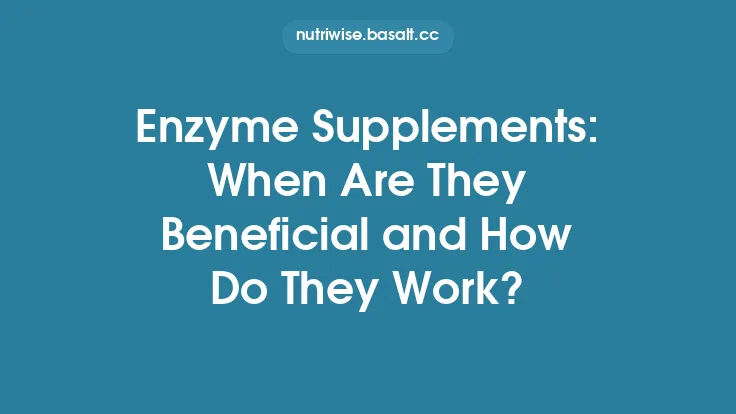Organic foods have become a staple on grocery shelves, in farmer’s markets, and on restaurant menus. The word “organic” often conjures images of pristine farms, pesticide‑free produce, and superior nutrition. Yet, the reality is more nuanced. While organic certification does guarantee certain production practices, it does not automatically translate into higher nutrient content or a universal health advantage. This article unpacks what the organic label truly means, how it is regulated, what the science says about nutrient differences, and how consumers can make informed choices without falling for marketing hype.
What “Organic” Means on Food Labels
The term “organic” is not a marketing buzzword; it is a legally defined standard that varies by country but shares core principles:
- No Synthetic Pesticides or Fertilizers – Organic farms must rely on natural alternatives (e.g., compost, cover crops, biological pest control) rather than synthetic chemicals.
- No Genetically Modified Organisms (GMOs) – Seeds and ingredients derived from genetic engineering are prohibited.
- Restricted Use of Antibiotics and Hormones – In animal production, antibiotics and growth hormones are generally banned, with limited exceptions for disease treatment.
- Soil Health Emphasis – Practices such as crop rotation, reduced tillage, and organic matter addition are required to maintain or improve soil fertility.
- Certification Process – Farms and processing facilities undergo annual inspections, record‑keeping audits, and must adhere to a set of detailed standards set by a certifying body (e.g., USDA National Organic Program in the United States, EU Organic Regulation in Europe).
When you see the USDA Organic seal, for instance, it indicates that at least 95 % of the agricultural ingredients are certified organic, with the remaining 5 % limited to a pre‑approved list of non‑organic substances.
Regulatory Standards and Certification
United States (USDA Organic)
- Three‑Tier System: “100 % Organic,” “Organic” (≥95 % organic ingredients), and “Made with Organic Ingredients” (≥70 % organic ingredients). Only the first two can display the official USDA seal.
- Prohibited Substances: A detailed list of over 200 synthetic substances is banned; a few, such as certain mineral salts, are allowed under strict limits.
- Inspection Frequency: Certified operations are inspected at least once a year, with additional spot checks possible.
European Union (EU Organic)
- EU Organic Logo: Similar to USDA, but the EU requires a minimum of 95 % organic content for the logo.
- National Variations: While the EU sets overarching rules, each member state may have additional requirements (e.g., stricter limits on certain natural pesticides).
Other Regions
- Canada, Australia, Japan: Each has its own certification bodies and standards, but the core principles—no synthetic chemicals, no GMOs, and a focus on ecological balance—are consistent.
Understanding these regulatory frameworks helps demystify what the label guarantees: compliance with production methods, not necessarily a guarantee of superior nutrition.
Nutrient Profiles: Organic vs. Conventional
The Evidence Base
Numerous meta‑analyses have compared the nutrient composition of organic and conventional produce, meat, dairy, and grains. The consensus is:
- Micronutrients: Some studies report modestly higher levels of certain vitamins (e.g., vitamin C, carotenoids) and minerals (e.g., iron, magnesium) in organic produce, but the differences are often small (5–15 %).
- Phytochemicals: Organic crops sometimes contain higher concentrations of polyphenols and flavonoids, likely due to increased plant stress from reduced pesticide use.
- Protein and Fat: In animal products, organic milk and meat may have a slightly better fatty‑acid profile (e.g., higher omega‑3, lower omega‑6 ratios) because of pasture‑based feeding practices.
Why Differences Exist
- Soil Health – Organic soils tend to have higher organic matter and microbial activity, which can influence nutrient uptake.
- Plant Stress – Limited pesticide use can trigger natural defense mechanisms, leading to increased synthesis of protective phytochemicals.
- Animal Diet – Organic livestock often have access to pasture and are fed organic feed, affecting the composition of their meat and milk.
Practical Takeaway
While organic foods can be nutritionally comparable or slightly superior, the magnitude of the difference is generally insufficient to rely on organic status alone for meeting daily nutrient requirements. A balanced diet rich in a variety of fruits, vegetables, whole grains, and lean proteins—whether organic or conventional—remains the cornerstone of good nutrition.
Pesticide Residues and Food Safety
Residue Levels
- Conventional Produce: Typically contains detectable pesticide residues, though most fall well below the regulatory maximum residue limits (MRLs) set to protect health.
- Organic Produce: Residues are usually lower or undetectable, but not zero. Natural pesticides (e.g., copper sulfate, neem oil) are permitted and can appear in testing.
Health Implications
- Acute Toxicity: Both organic and conventional foods meet safety thresholds for acute exposure.
- Chronic Exposure: The long‑term health impact of low‑level pesticide exposure is still an active research area. Some epidemiological studies suggest a correlation between high pesticide exposure and certain health outcomes, but causality remains uncertain.
Mitigation Strategies
- Washing and Peeling: Reduces surface residues on both organic and conventional produce.
- Choosing High‑Residue Items: For conventional produce, prioritize organic versions of the “Dirty Dozen” (e.g., strawberries, spinach) if pesticide exposure is a concern.
Processing and Additives in Organic Products
Organic certification extends beyond raw agricultural ingredients to the processing stage:
- Allowed Additives: Only a limited list of natural substances (e.g., certain acids, natural flavors) may be used. Synthetic preservatives, artificial colors, and flavor enhancers are generally prohibited.
- Processing Techniques: Organic standards encourage minimal processing. However, many organic foods undergo the same industrial processes (e.g., pasteurization, canning) as conventional counterparts.
Implications for Nutrition
- Preservatives: The absence of synthetic preservatives does not inherently improve nutrient density; many organic products still contain added sugars, sodium, or saturated fats.
- Fortification: Organic foods can be fortified (e.g., with vitamin D or calcium), but fortification is less common than in conventional products due to stricter additive rules.
Environmental and Sustainability Considerations
While the focus here is nutrition, it is worth noting that organic farming practices often have ancillary benefits:
- Biodiversity: Reduced chemical inputs support a wider range of insects, birds, and soil organisms.
- Soil Carbon Sequestration: Organic matter additions can increase soil carbon stocks, contributing to climate mitigation.
- Water Quality: Lower runoff of synthetic chemicals can improve downstream water quality.
These environmental advantages may influence consumer choices, but they do not directly affect the nutritional content of the food on your plate.
Consumer Perception and Marketing
The organic label carries strong emotional appeal, leading to several common misconceptions:
- “Organic = Healthier” – Not always true; healthfulness depends on the overall dietary pattern, not just the production method.
- “Organic Foods Are Always Lower in Calories” – Caloric content is dictated by macronutrient composition, which is not dictated by organic status.
- “Organic Means No Additives” – While many synthetic additives are banned, organic processed foods can still contain added sugars, salts, and fats.
Marketers often leverage the “clean label” perception to command premium prices. Critical reading of ingredient lists remains essential, regardless of the organic claim.
Practical Tips for Choosing Foods
- Prioritize Whole Foods – Fresh fruits, vegetables, legumes, whole grains, and minimally processed proteins provide the most nutritional bang for your buck, organic or not.
- Target High‑Residue Items – If pesticide exposure is a concern, consider buying organic versions of produce known to retain higher residues (e.g., berries, leafy greens).
- Read Ingredient Lists – Look beyond the front‑of‑package claim. An “organic” label does not guarantee low sugar, sodium, or saturated fat.
- Balance Cost and Benefit – Organic foods often carry a price premium. Allocate your budget to maximize nutritional impact—e.g., buy organic berries but conventional beans.
- Support Local and Seasonal – Farmers’ markets and community‑supported agriculture (CSA) programs may offer organically grown produce with reduced transportation footprints.
Bottom Line: Do Organic Labels Guarantee Better Nutrition?
The short answer is no—the organic label guarantees adherence to specific farming and processing standards, not a universal nutritional superiority. Scientific studies show that organic foods can be nutritionally comparable to, and occasionally modestly richer in, certain micronutrients and phytochemicals. However, the differences are generally small and should not be the sole driver of dietary decisions.
A health‑focused eating plan should prioritize variety, whole‑food choices, and balanced macronutrients. When budget permits, incorporating organic items—especially those with higher pesticide residues—can reduce exposure to synthetic chemicals and align with environmental values. Ultimately, the power to improve nutrition lies in the overall quality and diversity of the diet, not merely the presence of an organic seal.





